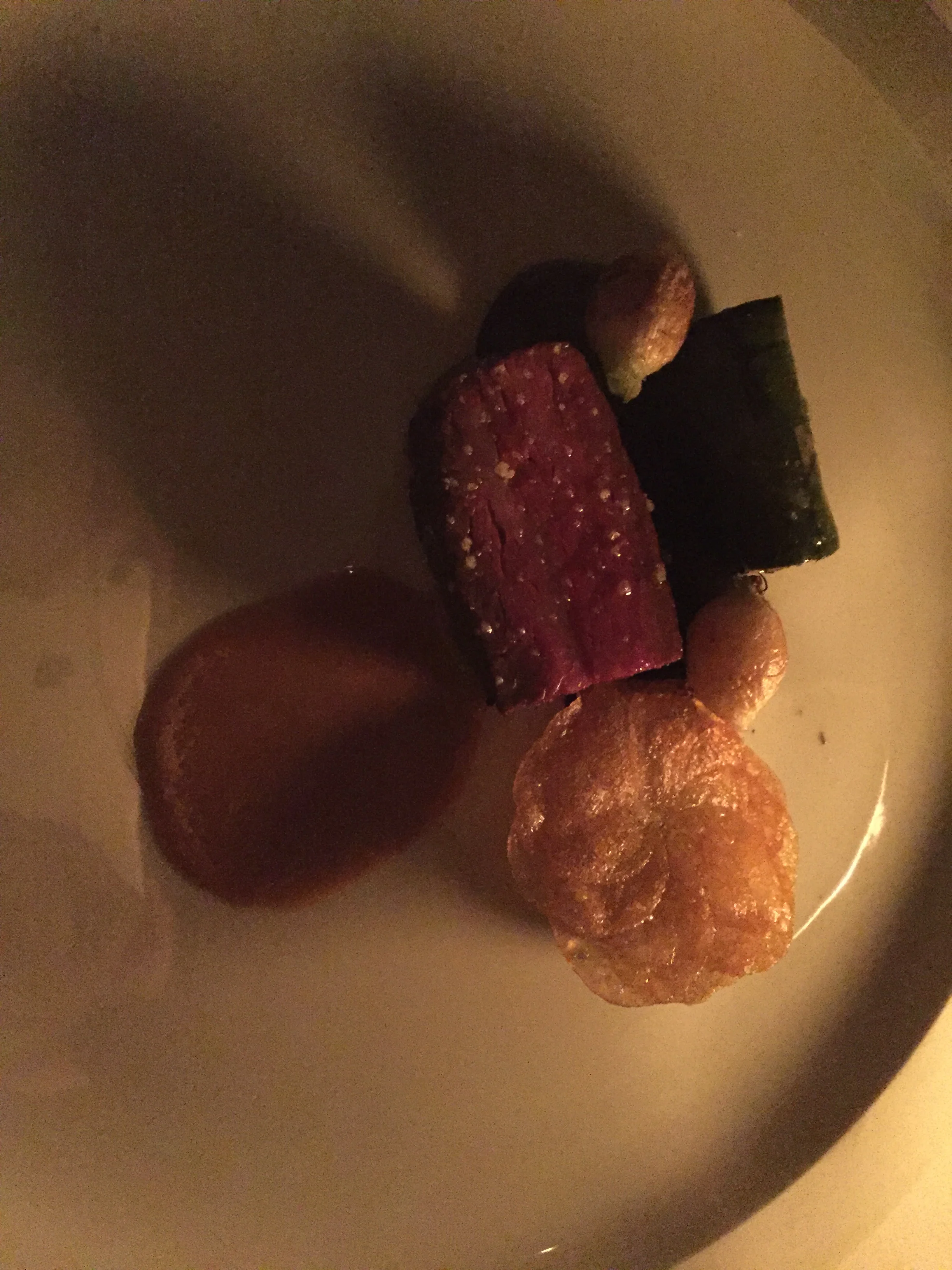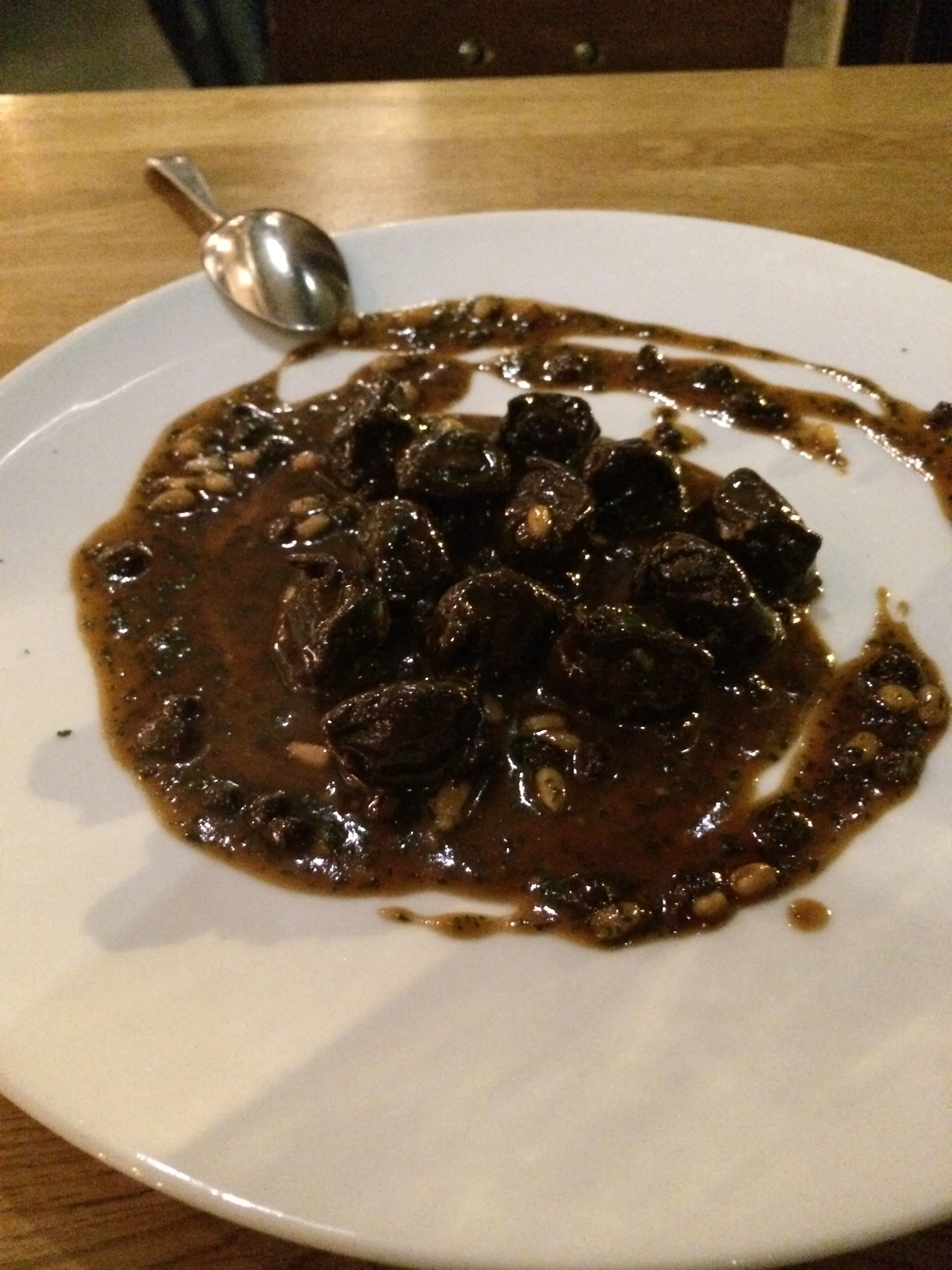Almost 2 years ago, I visited San Francisco. Then, Napa and Sonoma were almost an afterthought, a day-trip for country-side relaxation. My newfound interest in wine is truly newfound. I went to one winery last time, and it was a random one owned by the Clif Family (same Clif as the protein bar). But I managed to take a photo at the legendary restaurant in Yountville – the best restaurant in America by many accounts, and the best in the world by other accounts. Whether or not it is still the peak of Gastronomy is up for debate. Has Copenhagen or San Sebastian, or Tokyo overtaken Thomas Keller’s American stronghold? In any case, this is still a top fifty restaurant (read 50th) and deserving of every foodie’s respect. Further it happens to be the hardest reservation to snag in America, potentially in the world. So two years ago, I settled for a photo of the front sign, driving by on my wine trip tour.
This time I had the good sense to stop and talk to the maître D’. Again, I had no reservations, as they are impossible to get, even if you time the 9am (make sure it’s Pacific Time) call perfectly, exactly 28 days in advance, as a certain friend will attest to. Instead I tried to get in by asking, like I had done at Tickets a year and a half prior. I won’t say what I had to do to get this to work, but I will say that I was walking halfway back to my car when the maître D’ chased me down and told me that he could make it work. So that changed the nature of this trip completely. I was going to dine at the most coveted restaurant in America. The French Laundry.
The restaurant itself is a bucolic cottage in Yountville. In the middle of wine country. It was placed there because of the propensity of food tourism in the region, says Keller. Inside, the two story cottage-like setting is a lot like Arzak in San Sebastian. It is cozy, dimly lit, and actually, doesn’t scream best restaurant in the world. Outside the restaurant is the temporary kitchen as an old one is undergoing reservations. The staff is over 100, for a 60-ish top. Nothing compares with the service here. As soon as silverware drop to the 4 o’clock position, someone clears the plates. They’re all exceptionally intelligent and worldly, many of them working in the other Thomas Keller restaurants (read: per Se), and the so the conversation moved to my current residency near Columbus Circle. One joke surrounded a nearby watering-hole named “Three Star Diner,” which I commented was hopefully not Michelin stars and, they rebutted, was more like out of a hundred stars.
I have been delaying the writing of this entry as I am afraid my words will not do the restaurant justice. In many ways it is a difficult service as expectations are the highest they have ever been before a meal. That’s what happens when people line up for the opportunity to pay $300. The first few dishes are classics. An ice cream cone topped with salmon tartare and a gougère (a cheesy puff pastry). These aren’t the most extravagant amuses-bouches, or the most amusing in gastronomical lore. But the classic pairing of cheese and salmon is well taken. The next dish put the restaurant on the map. Oysters, tapioca pearls and caviar. The dish is an egg-based mousse (a “sabayon”). Eating it is a bit like a treasure hunt. On one side are soft, lukewarm oysters and on the other is a mountain of caviar. It’s hard to miss. The reason this dish is a classic is a combination of playfulness and simplicity – the interplay between the slippery oysters and pearls in a viscous sauce. The hen egg custard, another classic, follows and continues the all-out displays of luxury. This time, egg is served in custard form, interspersed by decadent truffles. A potato chip is paired. The continuation is foie gras, completing the holy trinity of luxuries. It is served with six types of salt from Hawaii, Japan, France and America. Without the salt, the taste is rather mundane, as “Rillettes” generally lack the texture and intensity of foie-gras proper. The trick is to add just enough salt to create a compelling contrast without making the dish too salty – perhaps a skill best left to the kitchen but can be adventurous to the diner. The main complaint of the dish was that the several garnishes failed to add anything to the foie-gras, already rich and overpowering. The price of $295 (all-included) is probably the best money spent all year, but the $40 supplement was probably the worst.
It is around now that the bread start coming. On offer is a butter-filled croissant that more or less melts in the mouth. Also available are four breads and accompanying butter. Apparently, one of the butters is made only for Thomas Keller and has only expanded as Keller’s restaurants grew. There are four mains before dessert. The first is a Mediterranean Turbot that is perfectly cooked but is not very exciting. The second is lobster, and likely the best lobster in the world. It is perfectly tender with no stringiness or chewiness that even other Top 50 restaurants have. It sits in a playfully financial-times pink maltaise sauce, which is hollandaise with oranges but judging by the colour is probably blood orange. The beets and citreous fruit add the well needed acid to cut through all the butter.
The quail dish is supposed to be a play on the “BLT”. There is nothing spectacular about bacon, lettuce and tomato and it is a feat to make it even palatable, and that is what was done here. But nothing brought it to fine dining status, least of which the bits of lettuce underneath the quail. Finally, the beef dish – a generous cut of “calotte” which is the fatty ring around the ribeye. That layer of fat is the cornerstone to this dish, creating what tastes almost like Kobé without the price tag. Instead of tender streaks of fat (marbling), it is more like a strip of fat that runs through the center. It is delicious, especially with the root vegetables and mushroom sauce – all to accentuate the earth sensation of aged beef. The only question mark is the crispy disk of potato wedges (“pommes maxim”) which adds no discernable flavor, is deep fried (in a dish that already has a lot of fat), and isn’t all that crispy. Toss that aside and the rest is magnificent. That is effectively all there is to write: dessert has never been and will never be a strong suit. There was the standard coffee and doughnuts and some delicious petits fours like crispy hazelnut balls but nothing you couldn’t get at an aspiring Michelin Star restaurant.
And so the dining experience at what some call the world’s best restaurant ends. The food is, indeed, excellent. The best dishes are the ones that use the most expensive ingredients, which Keller is able to exult and play with to perfection. The weaker ones involve multiple points of interest and where many different ingredients fight for dominance. It is clear that it is no longer the world’s best restaurant. More radical restaurants have come to the forefront of gastronomy, but many of their successes ricocheted off of Keller’s. That makes this tiny, bucolic cottage in the middle of wine country one of the most important restaurants to experience.
Salmon Cornets
gruyère cheese gougères
Oysters and Pearls
“Sabayon” of Pearl Tapioca with Island Creek Oysters and White Sturgeon Caviar
Hen Egg Custard with Truffles
Élevages Périgord Moulard Duck Foie Gras “Rillette”
Honey Poached Cranberries, French Pumpkin Chutney, Garden Celery, Toasted Oats and Black Winter Truffle “Coulis”
Sautéed Fillet of Mediterranean Turbot
Smoked Trout “Brandade,” Melted Garden Onions, Wild Purslane and Malt Vinegar
Sweet Butter Poached Maine Lobster
Satsuma “Supremes”, Garden Beets, Wild Sorrel and “Sauce Maltaise”
Wolfe Ranch White Quail and Bacon “Pressé”
Tomato Marmalade, Preserved Green Tomatoes, Romaine Lettuce and “Béarnaise Gastrique”
Charcoal Grilled Snake River Farms “Calotte de Boeuf”
Black Trumpet Mushrooms, Braised Collard Greens, Roasted Garden Turnips, “Pommes Maxim’s” and “Crème de Champignons”
“Cave aged Comté”
Toasted Banana Bread, English Walnuts, Belgian Endive and Black Winter Truffle Infused Honey
Coffee and Doughnuts, Macarons, Hazelnut chocolate balls
Housemade Truffles



































































































































































